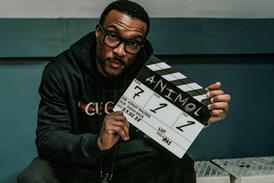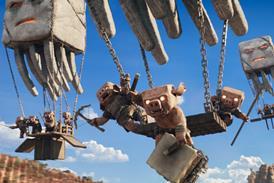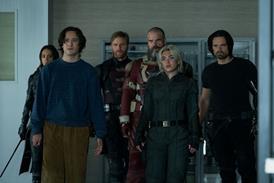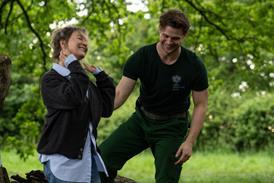Award-winning short-film director Lluis Quilez tells Nadia Tseng about his next big step with his feature directorial debut on Participant Media’s Out Of The Dark starring Julia Stiles and Scott Speedman.
The film follows a couple and their daughter as they move from London to Colombia to take over the family business. Events take a turn for the worse when the daughter is kidnapped and the couple learns more about ancient tales that haunt their small town.
Ouilez, a Barcelona native who graduated from film school in Catalonia, has spent most of his film-making career working on short films.
Vertical Entertainment opens the film theatrically in the US on February 27 and presents in association with Participant Media and Image Nation. Out Of The Dark is a production of Apaches Entertainment, Cactus Flower and Fast Producciones in association with Dynamo and XYZ Films. Bloom handles international sales.
What was the journey like finally getting to direct your first feature film?
After graduating in film, I started working in different positions as a crew member in productions. I was working simultaneously on three different short films, which I wrote and directed, as well as TV commercials. For the past years, I have been combining my own personal projects with academia, giving lectures on film-making at university. It has been a long road but I always knew what my goals were. When Participant Media offered me Out Of The Dark I believed it was the perfect moment to make that step in my career and direct my first movie.
Out Of The Dark was set in Colombia and is rooted in Colombian culture. Were the Colombian tax breaks an incentive to shoot there?
Originally, Out Of The Dark wasn’t set in Colombia but in South America. I believe the tax concessions offered by Colombia helped the producers make the decision to shoot the film there instead. The script was then adjusted to the Colombian reality, to its tradition and culture.
When did you shoot the film and how long did filming take in total?
The shooting lasted for seven weeks in Colombia only in 2013.
How did your work on your short films such as El Siguiente and Avatar prepare you for your first feature film?
Before directing my first feature film, I had written and directed three short movies (El Siguiente, Avatar and Yanindara). All of them have a very particular style and one can recognise it immediately, but they are all different at the same time. El Siguiente is a style exercise where I wanted to experiment with psychological horror and its atmosphere. Avatar is a very dark story depicting lost love, where my aim was to take the audience to very limit of tension with only two characters locked up in a small place. Yanindara, my last short, is also a work of fiction where I cast non-actors. The challenge here was to tell a classic magical tale in a small and isolated gypsy village.
I learnt a lot with my shorts and they enabled me to direct my first feature.
Out Of The Dark, like any horror film, was based on creating an atmosphere and playing with the audience’s expectations and taking them to the limit of their possibilities. I also mixed actors such as Julia Stiles, Scott Speedman and Stephen Rea with local non-actors, people who had never acted in film before. It gave the movie a lot of credibility. I had also worked with many children in my shorts and so it has helped me when it came to directing Pixie Davies, who plays the main characters’ eight-year-old daughter.
The biggest challenge, however, was to direct a story I hadn’t written. I had always written my shorts and this was the first time I directed a film that was commissioned.
What drew you do the thriller-horror genre?
Horror is a great genre to tell stories. I have always liked this genre since it enables us to explore humans’ darkest sides. Also, good horror movies have various layers. The premise must keep audience on the edge of their seats and by using the most basic emotions (survival, terror) one can explore the most complex conflicts in depth.
As the movie ends and audiences are taken to the final credits, you chose to play video of jovial children playing at a Colombian school. What is the significance of this?
Needless to say, the film talks about the importance of leaving a good legacy to future generations. This is a story about parents and children. For the message of the film to come across clearer, it was vital to make the audience aware of that bond.
Regarding the ending, there are different interpretations. I don’t want to reveal too much about the plot, but I believe that the image of children’s happiness at a school could lead to a darker reading. The First World washes its errors, sins or crimes in the Third World with money. And in this case, they invest in a school honouring the misery that they were responsible for in the first place.
What was it like working with so many young children?
As pointed out previously, my experience on working with children was vital. I like working with children: you must try to make them believe it’s all a game, so they no longer feel the on-set pressure. The results are usually greater.
What was it like working with actors like Julia Stiles and Scott Speedman for your first feature?
I was lucky enough to have a great cast for my first feature. They are very generous actors and very talented. I believe they did a great job and they look like a real family. There was a great atmosphere on set which helped the on-screen chemistry.
Will you eventually make Spanish-language features and what are you working on next?
I would of course love to make a film in Spanish some day, although the language is not the most important aspect. I am always looking for good stories that deal with universal conflicts. I have just finished writing Impure, a psychological thriller. I hope it will be my next film, but it is just a possibility.
I am currently finishing post-production of my new short called Graffiti. It is also a very personal project I wrote and directed. It is a post-apocalyptic drama set at the “end of the world” and that is the reason why we went to shoot in Pripyat [near the Chernobyl power plant], a unique location very difficult to access and where no other crew has filmed such a story. This straightforward and minimalistic story along with the breathtaking setting turns Graffiti into a unique piece



































No comments yet